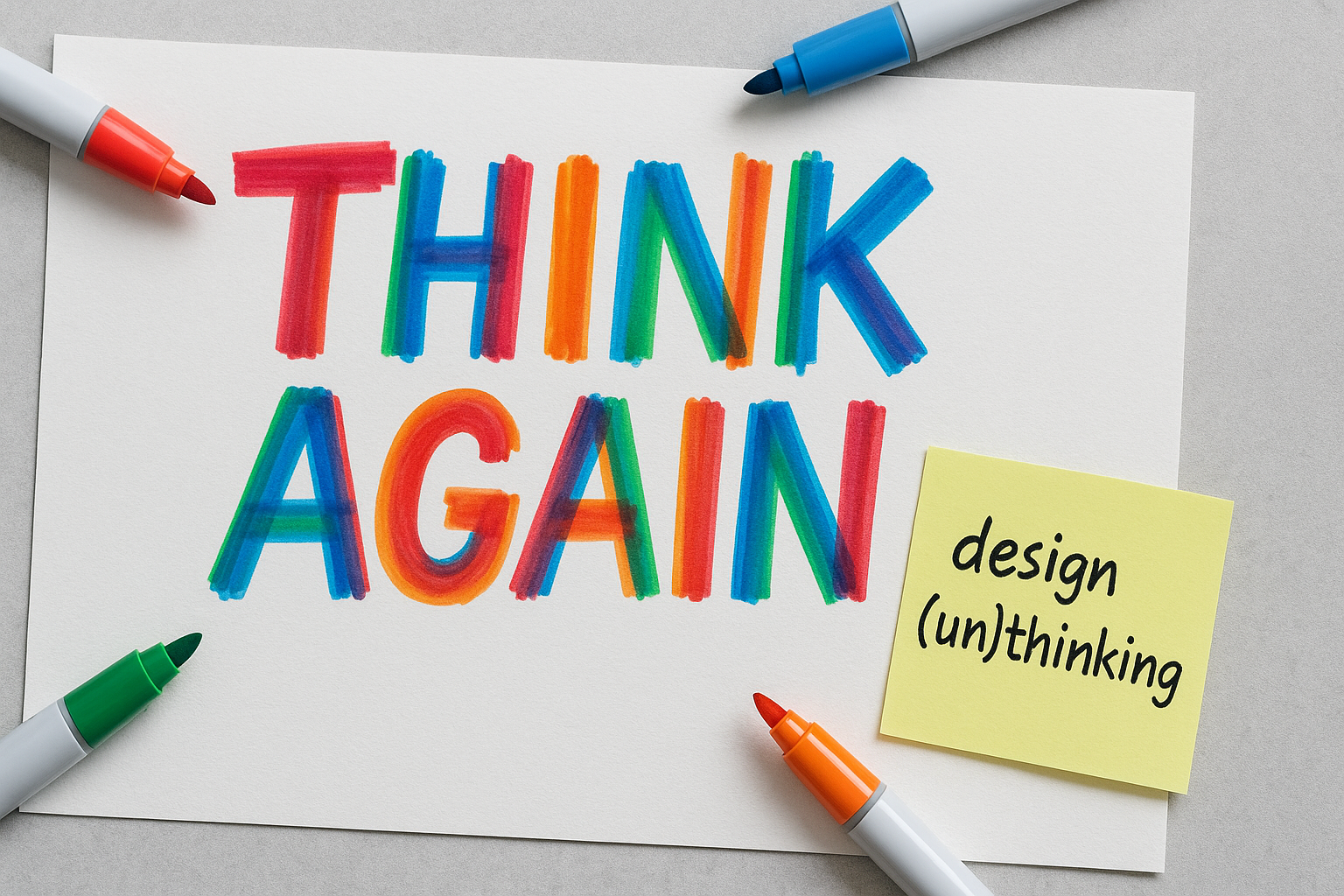Is Design Thinking in Crisis? Maybe. But That’s Not Necessarily a Bad Thing.
In recent months, several major international publications have questioned the current relevance of Design Thinking. Fast Company, for instance, noted that the term is rapidly vanishing from job listings and corporate pitches. According to data cited by the magazine, mentions of "Design Thinking" have dropped by 9% in UX/UI roles, 17% in product design, and a striking 57% in graphic design, as reported by LinkedIn.
This decline isn’t because the core principles are flawed, but because the term has become overused and diluted a trendy label that’s lost its meaning. The title of Mark Wilson’s Fast Company article says it all: "Design Thinking is on its deathbed (and that’s okay)."
Additional critical perspectives published in The Atlantic and Medium underscore the method’s limited effectiveness in dealing with complex design problems and its tendency to become a ritualized, superficial exercise in corporate environments.
Some of the most insightful critiques have emerged on LinkedIn.Jess Greco remarked: “The only people using that term with a straight face these days are business folks trying to pantomime caring about what people actually need.”
Shayan Mashatian (CGO) added: “Design Thinking is useful only when the problem domain is already identified. When you don’t yet know what problem you’re solving, trying to build a persona won’t work.”
Mike Davidson (ex-Microsoft) put it bluntly: “I’m almost 30 years into my design career and don’t recall ever having used the term Design Thinking. It always seemed too exclusive… Just build stuff people love.”
So, what exactly is Design Thinking?
Design Thinking is a human-centered approach to problem-solving. It’s used to design products, services, and experiences that are truly useful and desirable.
It typically involves five stages (not always linear):
Empathize: Understand people’s real needs through observation and listening.
Define: Clearly frame the problem you want to solve.
Ideate: Generate lots of ideas — even wild ones — without judgment.
Prototype: Build simple, fast versions of the best ideas.
Test: Put those prototypes in people’s hands and learn from their feedback.
It’s not magic, nor is it chaotic brainstorming. It’s a structured but creative process that starts with people, not technology or pre-baked solutions.
A simple example: the toaster
Let’s say a company wants to improve its toaster.
A shallow approach might be: “Let’s add more features!”
Design Thinking asks: “What frustrates people when using a toaster?”
Maybe you discover:
Users can’t see how toasted the bread is.
Small slices fall into the slot.
Crumbs scatter everywhere.
Those are real problems. That’s where good design starts.
Toaster concept
courtesy of SECCI Concept Design
But experienced designers go further:
Why does the bread burn?
Why is the slot too narrow?
Why can’t the toasting level be seen?
Why is cleaning it a nightmare?
This second approach isn’t less empathetic, it’s simply more grounded. It starts with people, but also considers materials, geometry, and manufacturing constraints.
That’s where basic Design Thinking stops and where REAL DESIGN begins.
REAL DESIGN: When Ideas Become Real
REAL DESIGN shares the same human-centered spirit but adds depth. It integrates form, function, cost, materials, and production constraints into a unified whole. It doesn’t just generate ideas — it builds products that actually work in the real world.
In industrial design, thinking like a designer isn’t enough. You also have to act like one. That means negotiating between creativity and feasibility, between vision and constraints.
Too many projects fail because Design Thinking is applied superficially. Companies add features just to stand out. Others copy successful products without truly understanding why they work or who they serve. There’s no real empathy. No real process. No real depth.
That doesn’t mean Design Thinking has failed; it’s just been misused.
The Value of Design Thinking (When It’s Real)
Design Thinking can still be powerful. When applied with rigor and sincerity, it helps multidisciplinary teams communicate. It unlocks fresh ideas in stale environments. It brings the focus back to people in processes dominated by tech or cost concerns.
In this way, Design Thinking and REAL DESIGN aren’t at odds; they complement each other. The former helps teams generate insights and ideas. The latter turns those ideas into viable, manufacturable, and meaningful products.
Conclusion
Design Thinking isn’t dead. But the blind enthusiasm around it might be.
If we want better products, we need design that embraces constraints. That goes beyond Post-its. That gets its hands dirty with materials and reality.
The future isn’t a method. The future is design that really happens.


